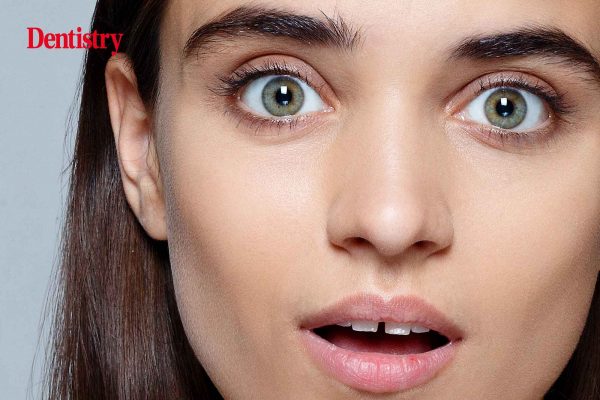Alina Lazar discusses anodontia of maxillary lateral incisors.
Anodontia is a genetic or congenital (hereditary) absence of one or several temporary or permanent teeth. The upper lateral incisors are among the teeth that are most often congenitally missing.
The present case report describes the treatment of a 26-year-old female patient with congenital agenesis of the maxillary lateral incisors. The patient also presented with a maxillary midline deviation and inclination of the occlusal plane in the anterior region. She came to me by recommendation from her mother to improve her smile. Her mother attended my practice with the same anomaly.
The goal of treatment was to create symmetry between 13 to 23. I also wanted to solve this case in a minimally invasive way, preferably with non-prep veneers.
Treatment planning
This stage of the procedure included the following:
- Orthodontic assessment, diagnosis, model analysis and Archwize 3D Models
- Fabrication of mock-ups and wax-ups
- Clearsmile Aligner Light
- Bleaching
- Crown lengthening
- Non-prep veneers
- Retention.
After a comprehensive extra- and intra-oral examination, profile and lip analysis (Table 1), a full series of extra- and intra-oral clinical photographs were taken. Also, impressions with 3M Impregum material and a bite registration.
The main problems noted were the diastema between teeth 11-21, 13-11 and 23-21. As well as the axial canter on 21 and the mal-alignment of the 11-21. These were positioned vertically and slightly palatally.
The Archwize tool was used to determine suitability of treatment with Clearsmile Aligner Light and to estimate the amount of tooth movement that would be necessary. The laboratory also provided a 3D model of the proposed final outcome of treatment, which was very useful in managing patient expectations and achieving patient compliance throughout the treatment process.
Treatment
Following professional tooth cleaning, the first ClearSmile Aligner Light was fitted and the patient was instructed to wear it for 22 hours a day. She was shown how to place and remove the aligner, and provided with oral hygiene advice.
The anterior alignment aspect of treatment was complete in just eight weeks. Tooth 21 was properly aligned and the protrusion of teeth 11 and 21 was corrected with four aligners worn for two weeks each. Satisfactory symmetry was also achieved between teeth 13-23 and so pre-prosthetic treatment was complete.
The next stage involved crown lengthening in order to establish harmony of the gingival level across each tooth. This is key in the creation of a beautiful smile. In this case, the gingiva and papilla levels on 11 and 21 were gently remodelled.
Following the ‘ABB’ concept form the IAS Academy – ‘Align, Bleach and Bond’ – tooth whitening was performed to subtly improve the colour of the teeth from a A2 / A2.5 shade to a A1 shade.
The Beautiful Smile whitening system was recommended, which uses an oxygen-releasing LED light to discolour organic dye on the teeth. Containing no hydrogen peroxide, this approach leaves the underlying dentine untouched and therefore causes no pain or discomfort to the patient.
The final phase of treatment was the fitting of the non-prep veneers, as bonding was not suitable for the amount of new structure required. These were Emax crowns used as a cut-back with the individual layering technique. It was not necessary for the restorations to be more than 0.3-0.5mm thick, which enabled us to preserve maximum natural tissue.
Outcome
After anterior alignment, bleaching and non-prep veneers finishing treatments, the process was complete – both the patient and the clinical team were very happy with the final results.
Ultimately, incorporating smile design is important to the ethos of my practice. Although finishing with composite contouring or veneers depends on the individual case, the most important element is to work as minimally invasively as the case allows. Indeed, I have found that when the above mentioned steps are carried out in the same way as this particular case, a very satisfying result can be achieved.
The team
Dr Alina Lazar ClearSmile Aligner and ClearSmile Inman Aligner Trainer Chairperson European Society of Cosmetic Dentistry – Germany
Dental Raum 901 MDT Ralf Wahrheit – Specialist in Esthetic Restoration Orthostrada Laboratory – IAS Academy.
This article first appeared in Orthodontic Practice magazine.
The post Anodontia and minimally invasive preparation treatment appeared first on Dentistry.co.uk.


